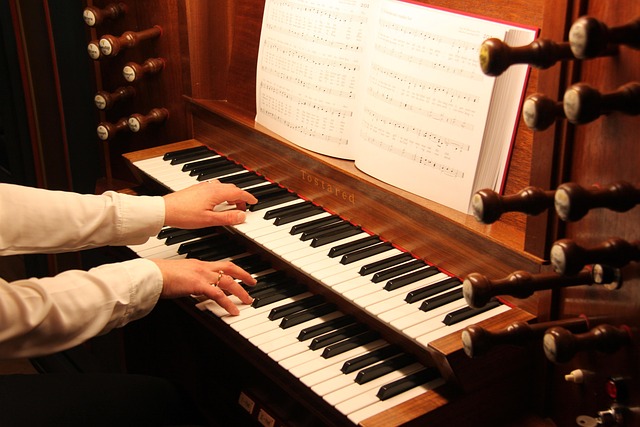Piano Types and Features: Your Complete Buying Guide
Pianos bring elegance, emotion, and timeless music into any space. Whether you're a beginner seeking a digital keyboard or a seasoned player drawn to the rich sound of a grand piano, today’s options combine craftsmanship with modern features to suit a variety of musical styles and spaces.

What Are the Main Types of Pianos Available?
The piano family includes several distinct categories, each offering unique advantages for different players and settings. Acoustic pianos remain the gold standard, featuring hammers that strike strings to create natural sound resonance. These traditional instruments include grand pianos, with their horizontal string arrangement and open lid design, and upright pianos that save space with vertical string positioning. Digital pianos use electronic sound sampling to replicate acoustic piano tones while offering modern conveniences like volume control and recording capabilities. Hybrid pianos combine acoustic piano actions with digital sound generation, providing the authentic key feel of traditional instruments alongside technological features.
How Do Grand Pianos Compare to Upright Models?
Grand pianos represent the pinnacle of piano craftsmanship, offering superior sound projection and dynamic range through their horizontal string layout. The longer strings in grand pianos produce richer bass tones and more complex harmonics, while the open case design allows sound to project freely into the room. These instruments typically range from baby grands at 5 feet to concert grands extending over 9 feet in length. Upright pianos maximize floor space efficiency by positioning strings vertically within a compact cabinet. Despite their smaller size, quality uprights deliver excellent sound and touch, making them ideal for homes, schools, and practice studios where space considerations matter most.
What Makes Digital Pianos Different from Acoustic Options?
Digital pianos offer modern solutions for contemporary musicians, using advanced sampling technology to recreate authentic piano sounds without requiring acoustic string mechanisms. These instruments provide consistent tuning, eliminating the maintenance needs of traditional pianos while offering features like multiple instrument voices, recording capabilities, and headphone compatibility for silent practice. Many digital pianos include weighted keys that simulate the touch and response of acoustic piano actions, helping players develop proper finger technique. The portability of digital pianos makes them excellent choices for performers who need to transport their instruments or musicians living in apartments where acoustic pianos might disturb neighbors.
Piano Price Ranges and Popular Models
Piano prices vary significantly based on type, size, brand, and features. Understanding typical cost ranges helps narrow your search and set realistic expectations for your piano purchase.
| Piano Type | Brand Examples | Price Range | Key Features |
|---|---|---|---|
| Digital Piano | Yamaha P-125, Roland FP-30X | $600 - $2,000 | 88 weighted keys, multiple voices, portable |
| Upright Piano | Kawai K-200, Yamaha U1 | $4,000 - $15,000 | Space-efficient, full acoustic sound, durable |
| Baby Grand | Steinway Model S, Yamaha C1X | $15,000 - $80,000 | 5-6 feet, rich harmonics, elegant appearance |
| Concert Grand | Steinway Model D, Bosendorfer 280VC | $80,000 - $200,000+ | 8-9 feet, professional performance quality |
Entry-level digital pianos from reputable manufacturers typically start around $600, while professional-grade models with advanced features can reach $3,000 or more. Acoustic upright pianos begin around $4,000 for quality new instruments, with premium models commanding $15,000 to $25,000. Grand pianos represent significant investments, starting near $15,000 for smaller models and reaching six figures for concert-quality instruments from prestigious manufacturers.
Prices, rates, or cost estimates mentioned in this article are based on the latest available information but may change over time. Independent research is advised before making financial decisions.
Choosing the Right Piano for Your Needs
Selecting the perfect piano requires balancing musical requirements, space constraints, and budget considerations. Beginners often benefit from digital pianos that encourage consistent practice through convenient features and lower maintenance requirements. Intermediate players might prefer upright acoustic pianos that provide authentic touch and sound development while fitting residential spaces comfortably. Advanced musicians and serious students typically gravitate toward grand pianos that offer the full dynamic range and expressive capabilities needed for complex repertoire and professional performance preparation.
Consider your long-term musical goals when making piano decisions. A quality instrument can serve musicians for decades, making it worthwhile to invest in features and capabilities that support growth and development. Space planning also plays a crucial role, as acoustic pianos require stable positioning away from heating vents and direct sunlight, while digital options offer greater placement flexibility.
The piano market continues evolving with technological advances and traditional craftsmanship improvements. Whether you choose a classic acoustic piano with centuries of musical heritage or a modern digital instrument with contemporary conveniences, the right piano becomes a gateway to musical expression and lifelong enjoyment. Take time to play different instruments, consider your specific needs, and consult with piano professionals to find the perfect match for your musical journey.




